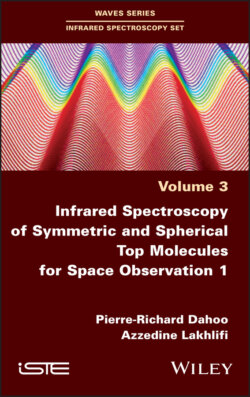Читать книгу Infrared Spectroscopy of Symmetric and Spherical Spindles for Space Observation 1 - Pierre-Richard Dahoo - Страница 9
Оглавление
Foreword
Before the early 1950s, the immensity of the cosmos seemed essentially cold and barren. The launch of Sputnik 1 on October 4, 1957, marked the beginning of the space age, and soon afterwards automated space explorers were sent through the solar system and orbiting terrestrial observatories were launched. At the same time, the development of advanced detection techniques and increasingly powerful telescopes contributed to the unprecedented rapid expansion of terrestrial observatories. All these developments led to a radical transformation of our view of both planetary atmospheres and interstellar medium, revealing an unexpected molecular abundance and giving birth to a new discipline: astrochemistry.
This transformation relies heavily on the use of light as a messenger, providing information on the composition of these media by taking advantage of the available range of wavelengths. Indeed, although Newton understood the decomposition of visible light as early as 1666, it was not until 1800 that Herschel broadened our view with the discovery of infrared radiation, followed shortly by Ritter’s discovery of ultraviolet radiation, and then Röntgen’s 1895 discovery of X-rays. Then, Maxwell unified these various radiations in his electromagnetic field theory. Starting with the 1920s, the development of quantum physics by Heisenberg, Schrödinger, Pauli, Dirac, etc. brought the tools to understand why chemical elements (atoms and molecules) left a discrete signature, in the form of absorption or emission lines in the electromagnetic spectra, an observation that Wollaston and Fraunhofer had made over a century earlier. This laid the basis for the use of spectroscopy as an essential analytical tool.
Nevertheless, since molecules mainly absorb short wavelength radiation, infrared and microwave radiations, largely absorbed by the Earth’s atmosphere, the advent of space observatories was decisive for astrochemistry. However, observatories in the microwave range were also set up at the ground level, at high altitude and very dry regions (ALMA), or airborne (stratospheric balloons, SOFIA). The astrophysicists now have a significant array of instruments available that are dedicated to spectroscopy, which obviously includes spectrometers airborne by space probes heading for Venus (Venus Express), Mars (Mars Express, TGO, etc.), Jupiter (Juno), Saturn (Cassini-Huygens), comets (Rosetta), etc. An exciting future lies ahead in this field, given the terrestrial observatories (E-ELT, etc.), space observatories (JWST, WFIRST) and various planetary missions.
Moreover, the discovery in 1995 by Mayor and Quéloz (Nobel Prize in Physics 2019) of the first exoplanet, and the exponential number of discoveries of these celestial bodies ever since, opened the way for conducting the very first spectroscopic studies of their atmospheres. The coming new space instruments (JWST, ARIEL) will even be partially or entirely dedicated to the spectroscopic characterization of these extrasolar planets, the target being the research of biosignatures.
However, using all these instruments and their large amounts of data requires significant upstream experimental and theoretical laboratory work, in order to record and model the spectra of many molecules. This may involve relatively complex organic molecules as well as simple molecules. Indeed, contrary to a preconceived idea, there is definitely still not enough modeling of the infrared spectrum of “small” molecules (CO2, H2O, CH4, NH3, etc.) in the current databases. In fact, the data needed by planetologists nowadays need to cover “extreme” conditions that were to a little extent, if at all, studied in the laboratory, that is: very high temperatures and pressures, molecules in confined environments, etc.
The aim of this book is to review the theoretical knowledge required for understanding and modeling the spectra of two molecules that are essential in planetology, ammonia (NH3) and methane (CH4), and to provide the tools for their spectroscopic study in a confined environment, such as the clathrates.
Vincent BOUDON
Research Director (CNRS – French National Center for Scientific Research)
Laboratoire interdisciplinaire Carnot de Bourgogne (ICB)
January 2021
